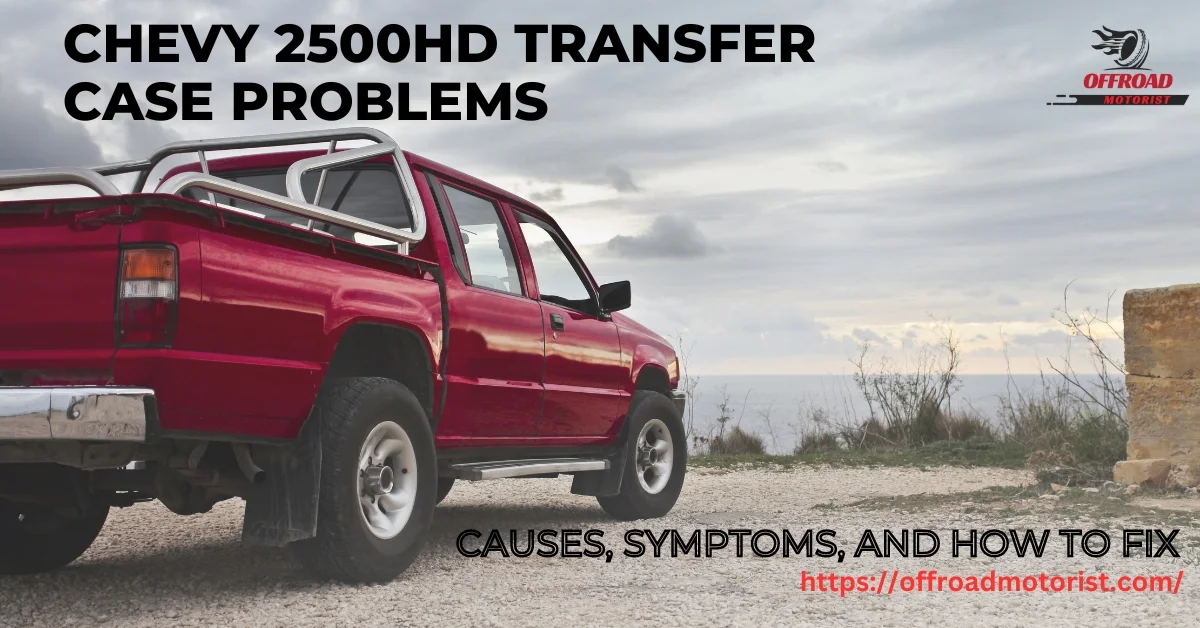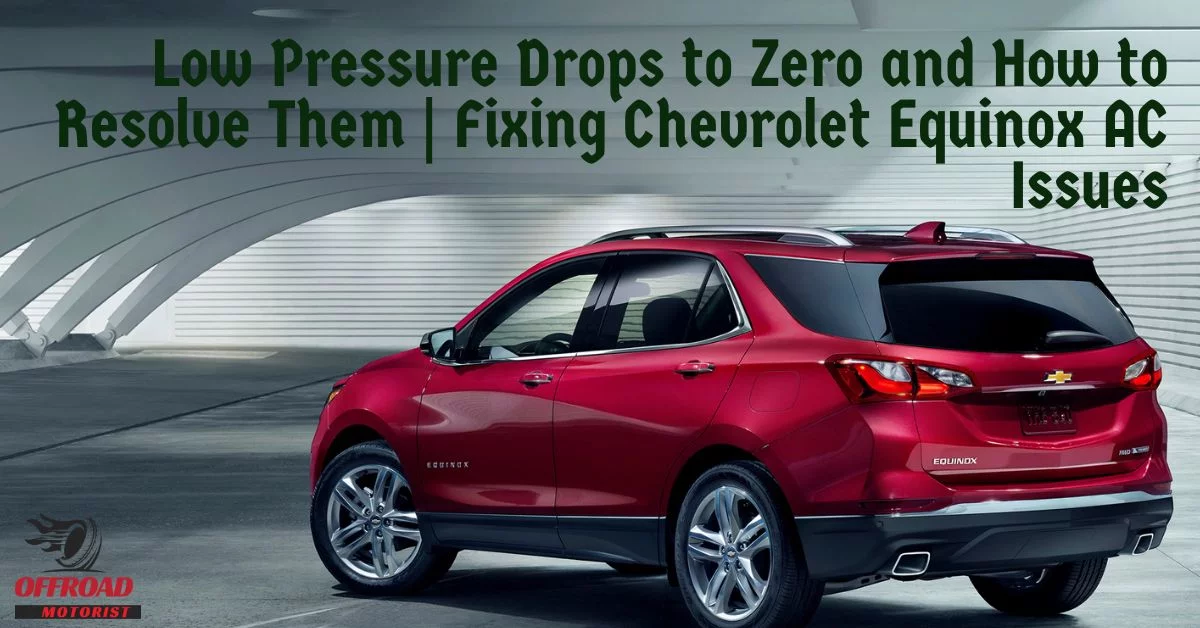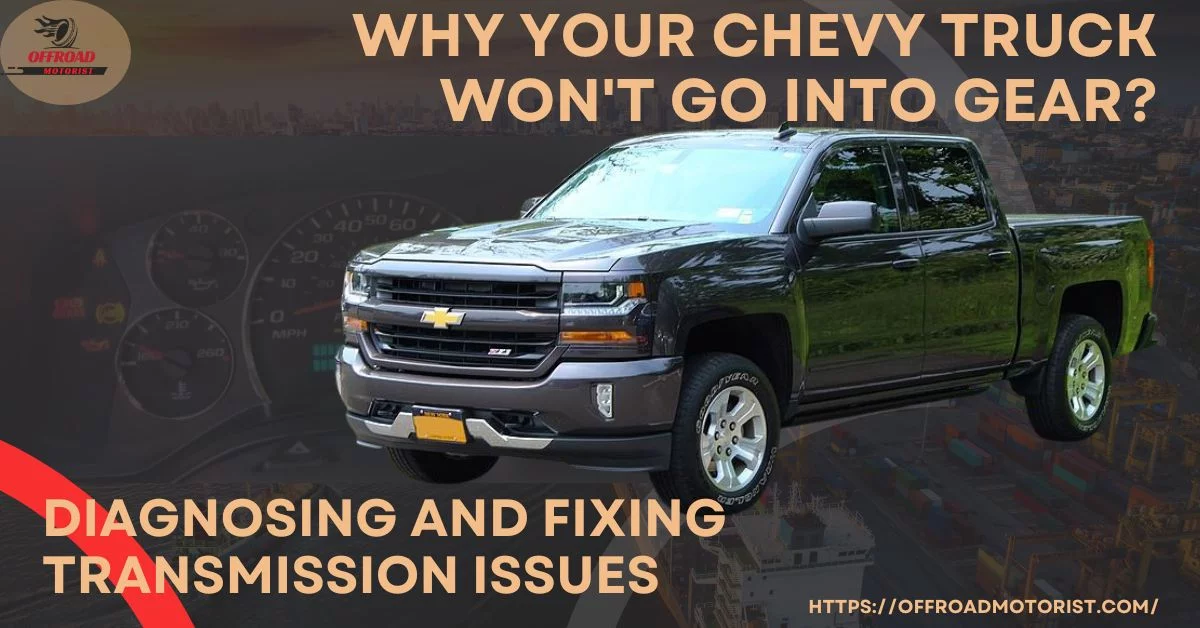A Comprehensive Guide to Smog Pump Removal Chevy 350 Engines
Emissions control systems are vital in reducing vehicles’ environmental impact. The smog pump, a key component, helps minimize harmful emissions in Chevy 350 engines. Some owners may consider removing it to enhance performance or reduce weight.
However, understanding the implications and following legal and environmental guidelines is crucial.
In this guide, we’ll explore the role of smog pumps, discuss reasons for removal, examine legal and environmental factors, and provide a step-by-step guide on smog pump removal Chevy 350 Engines.
By the end, you’ll have a deeper understanding of the smog pump and be able to make informed decisions about modifying your Chevy 350’s emissions control system.
I. The Role of Smog Pump in Chevy 350 Engines
A smog pump, or air injection pump, is an essential component of the emissions control system in Chevy 350 engines.
Its primary function is to reduce harmful emissions produced during the combustion process. Let’s examine how smog pumps work and their role in controlling emissions.
How smog pumps work:
The smog pump introduces fresh air into the exhaust stream to promote the oxidation of pollutants like hydrocarbons (unburned fuel) and carbon monoxide (a product of incomplete combustion).
This additional oxygen enables the pollutants to burn more efficiently, converting them into less harmful byproducts like carbon dioxide and water vapor.
The engine’s serpentine belt usually drives the smog pump and operates using either an electric motor or a belt-driven mechanical pump.
01. Smog pump components:
The main components of a smog pump system include the pump itself, a series of hoses and valves, and a check valve. The check valve ensures that exhaust gasses don’t flow back into the pump, which could cause damage.
Additionally, some systems feature an air injection control valve that regulates air flow into the exhaust stream based on engine speed and operating conditions.
02. Impact on Chevy 350 engines:
In Chevy 350 engines, the smog pump plays a crucial role in meeting emissions standards by reducing harmful exhaust pollutants.
By promoting the complete combustion of hydrocarbons and carbon monoxide, the smog pump contributes to cleaner exhaust emissions and a reduced environmental impact.
II. Reasons for Considering Smog Pump Removal
While smog pumps are important in emissions control, some Chevy 350 owners might consider removing them for various reasons. This section will discuss the potential benefits and drawbacks of smog pump removal.
01. Performance improvements:
Some owners believe that removing the smog pump may improve engine performance by reducing parasitic losses (the power consumed by the pump) and allowing the engine to breathe more efficiently.
However, the actual performance gains from smog pump removal are often negligible, as modern engines are designed to work efficiently with emissions control systems.
02. Weight reduction and simplified engine bay:
Removing the smog pump can lead to a minor weight reduction, as the pump, hoses, and related components are no longer present.
Additionally, with the smog pump removed, the engine bay may be less cluttered, making accessing other components for maintenance or modifications easier.
03. Maintenance considerations:
In some cases, smog pump removal may be considered due to a malfunctioning pump or a desire to reduce maintenance requirements.
It’s important to remember that a properly functioning smog pump is critical for emissions control, and removing the pump may lead to increased emissions.
Note: While there are potential benefits to smog pump removal, it’s essential to weigh these against the drawbacks, including potential legal and environmental implications.
III. Legal and Environmental Implications of Smog Pump Removal
Before proceeding with smog pump removal, it’s essential to understand this modification’s legal and environmental consequences. This section will discuss the potential implications and the importance of making a responsible decision.
01. Emissions regulations and potential violations:
In many regions, emissions regulations require vehicles to have functioning emissions control systems, including smog pumps.
Removing the smog pump may result in non-compliance with these regulations, leading to potential fines, penalties, or even the denial of vehicle registration.
It’s crucial to check your local emissions regulations before considering smog pump removal to avoid legal issues.
02. Environmental impact:
The primary purpose of a smog pump is to reduce harmful emissions. Removing the smog pump can increase emissions, contributing to air pollution and exacerbating environmental problems like smog, acid rain, and climate change.
As a vehicle owner, it’s essential to consider the environmental consequences of smog pump removal and weigh these against any potential benefits.
03. Vehicle inspection:
In regions with mandatory vehicle inspections, removing the smog pump may cause your vehicle to fail the emissions test, which could lead to costly repairs or penalties.
It’s important to consider the potential impact of smog pump removal on your vehicle’s ability to pass inspections before deciding to remove it.
IV. Preparing for Smog Pump Removal Chevy 350 Engine
If you’ve decided to remove the smog pump from your Chevy 350 engine and are confident that doing so complies with local emissions regulations, the next step is to prepare for the removal process.
01. Necessary tools and equipment:
To remove a smog pump from a Chevy 350 engine, you will typically need the following tools and equipment:
- Wrenches or socket set
- Screwdrivers (flathead and Phillips)
- Pliers or hose clamp pliers
- Serpentine belt removal tool (if applicable)
- Replacement serpentine belt (if needed)
- Replacement block-off plates or plugs (for sealing the openings left by smog pump removal)
02. Safety precautions:
Before starting the smog pump removal process, it’s essential to take the following safety precautions:
- Disconnect the battery to prevent electrical shock or accidental engine starting.
- Ensure the engine is cool to avoid burns from hot components.
- Use eye protection, gloves, and other appropriate personal protective equipment to prevent injuries.
- Work in a well-ventilated area to avoid exposure to exhaust fumes.
By gathering the necessary tools and equipment and following proper safety measures, you can be well-prepared to remove the smog pump from your Chevy 350 engine.
V. Step-by-Step Guide: Removing a Smog Pump 350 Engine
In this step-by-step guide, we will provide more detailed information on removing a smog pump from a Chevy 350 engine.
Remember that the removal process may vary slightly depending on your vehicle’s specific year and model. Always consult your vehicle’s service manual for any specific instructions or variations.
01. Prepare your workspace:
Ensure you have a clean, well-lit, and well-ventilated area to work on your vehicle. Gather all the necessary tools, equipment, and safety gear mentioned in Section IV.
02. Locate the smog pump:
The smog pump is usually mounted near the front of the engine on either the driver’s or passenger’s side. Look for a round or rectangular component with hoses and electrical connections attached. The engine’s serpentine belt typically drives it.
03. Disconnect the battery:
Safety first. Disconnect the negative battery cable to prevent electrical shock or accidental engine starting. Use a wrench to loosen the cable clamp and remove the cable from the battery terminal.
04. Remove the serpentine belt:
Locate the belt tensioner, a spring-loaded component that maintains tension on the serpentine belt.
Use a wrench or a serpentine belt removal tool to release the tension by rotating the tensioner away from the belt. Carefully slide the belt off the smog pump pulley and other pulleys, noting the routing for reinstallation later.
05. Label and disconnect hoses and electrical connections:
Label the hoses and electrical connections attached to the smog pump to make reassembly easier if necessary. This may include air intake hoses, exhaust manifold hoses, and any electrical connectors.
Use pliers or hose clamp pliers to remove hose clamps and carefully disconnect hoses. Unplug electrical connections by pressing the release tab and gently pulling the connector apart.
06. Remove mounting bolts, brackets, and pulleys:
Locate the mounting bolts, brackets, and pulleys that secure the smog pump to the engine or accessory bracket.
Use a wrench or socket set to remove these bolts and brackets, taking care not to damage surrounding components. If the smog pump has a separate pulley, remove the retaining bolt and slide the pulley off the pump shaft.
07. Remove the smog pump:
With all hoses, electrical connections, and mounting hardware removed, carefully lift the smog pump out of the engine bay. Be cautious not to damage any nearby components during removal.
08. Seal the openings:
After removing the smog pump, seal any openings left in the exhaust manifold and air intake system. Use appropriate block-off plates, gaskets, or plugs to close these openings, ensuring a proper seal to prevent exhaust leaks and air contamination.
09. Inspect and replace any worn or damaged components:
Take this opportunity to inspect the surrounding components, such as hoses, clamps, and electrical connections, for any signs of wear or damage. Replace any worn or damaged components as needed.
10. Reinstall the serpentine belt:
If your vehicle requires a shorter serpentine belt after smog pump removal, install the new belt according to the proper routing.
If you are reusing the original belt, reinstall it, following the correct routing and ensuring it is properly seated on all pulleys.
Use a wrench or serpentine belt removal tool to release the tension on the belt tensioner and slide the belt into place.
11. Reconnect the battery:
Once the smog pump removal process is complete, reconnect the negative battery cable and tighten the cable clamp with a wrench.
12. Double-check your work:
Before starting the engine, double-check all connections, seals, and belt routing to ensure everything is properly installed and secured.
Inspect the area for any tools or debris that may have been left behind during the process. Make sure all hoses and electrical connections are secure and properly seated.
13. Start the engine and check for issues:
After double-checking your work, start the engine and let it idle. Listen for any unusual noises, and visually inspect the engine bay for any signs of leaks or issues related to the smog pump removal. If any problems are detected, turn off the engine and address them before resuming operation.
14. Test drive and monitor performance:
Take your vehicle for a test drive to ensure it operates smoothly and without issues. Pay attention to the engine’s performance, including acceleration, idling, and overall drivability.
Monitor your dashboard for any warning lights or messages related to emissions, engine performance, or other systems that may be affected by the smog pump removal.
Remember that this guide is intended for educational purposes, and it’s essential to consult your vehicle’s service manual for specific information and instructions related to your particular make and model.
Note: Always follow local emissions regulations and ensure that any modifications made to your vehicle comply with the law.
Following these steps, you can ensure a thorough and safe removal of the smog pump from your Chevy 350 engine. Be prepared to address any issues that may arise during the process and take the time to double-check your work to ensure a successful removal and a well-functioning vehicle.
VI. Alternatives to Smog Pump Removal
If you’re considering smog pump removal primarily for performance gains or a cleaner engine bay, there are alternative solutions that may address your concerns without the potential legal and environmental drawbacks.
01. Smog pump maintenance and upgrades:
Instead of removing the smog pump entirely, consider regular maintenance and potential upgrades to ensure optimal performance. This can include replacing worn or damaged components such as hoses, valves, and bearings and upgrading to a more efficient or quieter smog pump.
02. Performance-enhancing modifications:
Various performance-enhancing modifications can be made to your Chevy 350 engine without removing the smog pump. These may include upgrading the exhaust system, installing a performance air intake, or tuning the engine for increased horsepower and torque.
03. The custom engine covers and dress-up kits:
If your primary concern is aesthetics, consider installing custom engine covers or dress-up kits to give your engine bay a cleaner, more streamlined appearance without sacrificing emissions control.
VII. Reinstalling the Smog Pump
If you have removed the smog pump from your Chevy 350 engine and later decide to reinstall it, the process is essentially the reverse of the removal steps.
01. Install the smog pump:
Position the smog pump in the engine bay and secure it using the original mounting hardware. Ensure that it is properly aligned and firmly attached.
02. Connect hoses and electrical connections:
Reattach any disconnected hoses and electrical connections during the smog pump removal process. Be sure to route hoses and wires properly to avoid interference with other components.
03. Install the serpentine belt:
Reinstall the serpentine belt, ensuring it is properly routed and seated on all pulleys. Release tension on the belt tensioner and slide the belt into place.
04. Reconnect the battery:
Reconnect the negative battery cable and tighten the cable clamp with a wrench.
05. Double-check your work:
Inspect the smog pump installation to ensure all connections and components are properly secured. Verify that no loose hoses, wires, or other items could cause issues during operation.
06. Start the engine and check for issues:
Start the engine and let it idle, checking for leaks, unusual noises, or other issues. If any problems are detected, turn off the engine and address them before resuming operation.
Following these steps, you can reinstall the smog pump on your Chevy 350 engine if needed.
FAQs about Smog Pump Removal Chevy 350 Engine
This section will address some frequently asked questions related to smog pump removal on a Chevy 350 engine.
Will removing the smog pump improve my vehicle’s performance?
While removing the smog pump may lead to minor performance gains, the improvement is typically negligible for most drivers. Other performance-enhancing modifications can be made without removing the smog pump for a more significant impact on horsepower and torque.
Is it legal to remove the smog pump from my vehicle?
Laws regarding smog pump removal and emissions control vary by location. In many areas, removing the smog pump is illegal and can result in fines, vehicle registration issues, or failed emissions tests. Always consult local regulations before proceeding with smog pump removal.
Will my vehicle pass emissions testing without a smog pump?
In most cases, removing the smog pump will cause your vehicle to fail emissions testing. The smog pump is an essential component of your vehicle’s emissions control system, and its removal can lead to increased pollutant emissions.
What are the potential consequences of removing the smog pump from my vehicle?
Potential consequences of smog pump removal include increased emissions, legal issues, and potential damage to other engine components due to exhaust backpressure. Additionally, removing the smog pump may void any remaining warranty on your vehicle.
Can I reinstall the smog pump if I decide to remove it?
Yes, if you decide to remove the smog pump and later wish to reinstall it, you can do so by following the steps outlined in Section VIII of this article.
Final Thoughts
Smog pump removal on a Chevy 350 engine is a complex process with potential legal and environmental implications.
It is essential to carefully consider these factors and explore alternative solutions before proceeding with smog pump removal.
If you decide to remove the smog pump, consult your vehicle’s service manual and follow local emissions regulations.




![Chevy Transfer Case Interchange Chart [Everything you need to Know] chevy transfer case interchange chart](https://offroadmotorist.com/wp-content/uploads/2023/03/chevy-transfer-case-interchange-chart-150x150.jpg)
![Mastering Headlights| Low Beam vs High Beam [Symbols, Functions, and Optimal Usage] Low Beam vs High Beam](https://offroadmotorist.com/wp-content/uploads/2023/03/Low-Beam-vs-High-Beam-150x150.jpg)





